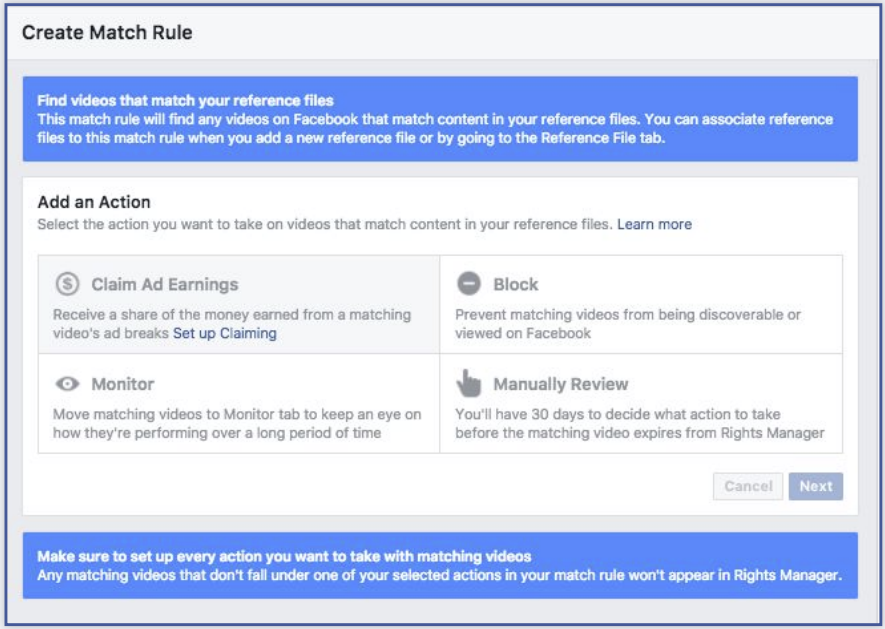 For reasons that make absolutely no sense while somehow making perfect sense, millions of internet users think that social media platforms are perfect for piracy.
For reasons that make absolutely no sense while somehow making perfect sense, millions of internet users think that social media platforms are perfect for piracy.
Social media platforms like Facebook are admittedly quick and easy, but such positives are quickly overwhelmed by extraordinary privacy issues, not to mention centralized control. Nevertheless, the masses love quick and easy so in common with similar platforms everywhere, social media has a piracy problem.
Partners Against Piracy
This week Meta and Italian broadcaster RTI announced the signing of a multi-year partnership that will attempt to prevent the latter’s TV content from being pirated on Meta platforms. According to RTI, the companies will “collaborate on the implementation of a set of tools and systems” to protect RTI’s copyrighted content, including its live TV broadcasts.
The odds of Meta/Facebook implementing systems that only benefit RTI seem slim, but it may be possible to identify areas for improvement useful to a broader set of rightsholders. However, since RTI specifically mentions that Meta will provide dedicated training on how to use Meta’s ‘Rights Manager’ system more effectively, it wouldn’t be a surprise if that was the key focus of the agreement.
So what is Rights Manager, and how does it work?
Rights Manager Took Inspiration From Content ID
YouTube’s Content ID system first appeared more than 15 years ago, and today many users of the site will have seen it in action. Content ID uses algorithms to generate digital ‘fingerprints’ of content uploaded to the platform which can then be compared against reference files (original content) provided by rightsholders.
When a match is found, rightsholders have several broad options – block the uploaded content, monitor its statistics, monetize the upload with advertising and take the revenue, or sit back and do nothing.
Facebook launched its own content-matching, rights management tool in 2016. In common with Content ID, Rights Manager relies on reference files uploaded to the platform by rightsholders.
When a match is found, rightsholders can perform ‘match actions’ – block the uploaded content, monitor for insights into performance and audience engagement, place a banner on matching videos linking to content of their choice, or monetize with advertising and, of course, take the revenue.
In common with YouTube’s system, ‘match actions’ can be mixed, such as blocking in one country but taking revenue in another.

The details of the Meta/RTI ‘partnership’ are unknown, but it’s worth noting that Rights Manager cannot function without Meta collaborating with rightsholders.
In February 2022, Meta told the U.S. Copyright Office that features available in Rights Manager are “the result of a voluntary collaboration between Meta, rights holders, and many other stakeholders.” Meta said it actively solicits feedback from rightsholders which determines what features to add or change in Rights Manager.
Matching Reference Content With User Uploaded Content
Content matching systems have been around for a long time, but those who design and operate them tend not to share too many details. In October 2022, as part of the reCreating Europe project, a group of researchers published a study that pulled back the veil on fingerprinting systems including Audible Magic, Content ID, and Rights Manager.
The researchers noted how once a reference file is uploaded to Rights Manager, the owner of the content can specify what constitutes a match, under four general “dimensions” – (1) User Dimension, (2) Geographical Dimension, (3) Comparative Dimension, and (4) Content Dimension – explained by the researchers as follows:
According to the user dimension, (1) a reference file uploader can authorize specific pages or accounts to use the content of the reference file. Further, geographical regions (2) can be included/excluded for viewers. Per the comparative dimension (3), reference file uploaders can specify the temporal overlap between the reference file and an uploaded content that will constitute a match, which in practice is a way of enabling copyright exceptions. For example, copyright owners might allow others to use parts of their video if their posts are not longer than 10 seconds.
The researchers found that Content Dimension (4) only applies to videos and live video.
For example, if RTI uploaded one of its recorded TV shows to Rights Manager, it’s likely to be offered a choice; does the company wish to protect only the moving images or the audio content as well? If the soundtrack contains music to which another company owns the rights, a request to protect both could be problematic.
Taking Down Live Streams
That YouTube and Facebook are able to take down live streams is well-known, especially by those sitting down to watch a Premier League game or a PPV boxing event without having paid for the pleasure. Broadcasters and sports leagues can use Rights Manager to protect their content but in a statement to the U.S. Copyright Office, Meta said it also uses machine learning to recognize patterns on Facebook.

“[W]e use automated systems that detect and track the presence of keywords typically associated with piracy, prior IP violations from problematic accounts, and other factors that signal the presence of potentially infringing content and bad actors on our platforms. This includes proactively identifying and removing suspected live pirated broadcasts,” Meta explained.
The very nature of live streams means that uploading ‘reference content’ before an event begins is impossible. However, Rights Manager and Content ID both allow rightsholders to pipe live feeds directly into their platforms meaning that even live content can be matched, give or take a few minutes.
Whether it’s used by Rights Manager is unknown, but some rightsholders have also developed logo recognition systems.
These could be particularly useful during sports broadcasts or PPV events where broadcasters have a tendency to display their logos on screen throughout. There’s also some evidence to suggest that pirate IPTV providers’ logos have been used to identify infringing broadcasts.
With so many technologies available, any number or combination of methods could be deployed, and most people would remain completely oblivious. At least until Facebook’s AI flicks the switch.
RTI’s statement on its partnership with Meta can be found here (pdf)
Image credit: Pixabay/gerault





